#suzhou embroidery
Explore tagged Tumblr posts
Text
suxiu苏绣/suzhou embroidery of traditional chinese embroidery by xue shuping薛淑萍
work of suxiu masters in museums






1K notes
·
View notes
Text
2K notes
·
View notes
Text

Samples are important! I found out that I want an additional shade (maybe 2!) of green, i need to use a higher proportion of dark pink on the petals, and the petal interiors need to be a different shade or color for contrast. I will probably also do a pomegranate test and a fox test.
19 notes
·
View notes
Text
Hi Producer (正好遇见你) Infodump
Disclaimer: I have no idea about the accuracy of the information shared in the drama, I'm merely transcribing for future reference purposes. Proceed with caution!
.
Ep 26-27: Stage Costumes and Props
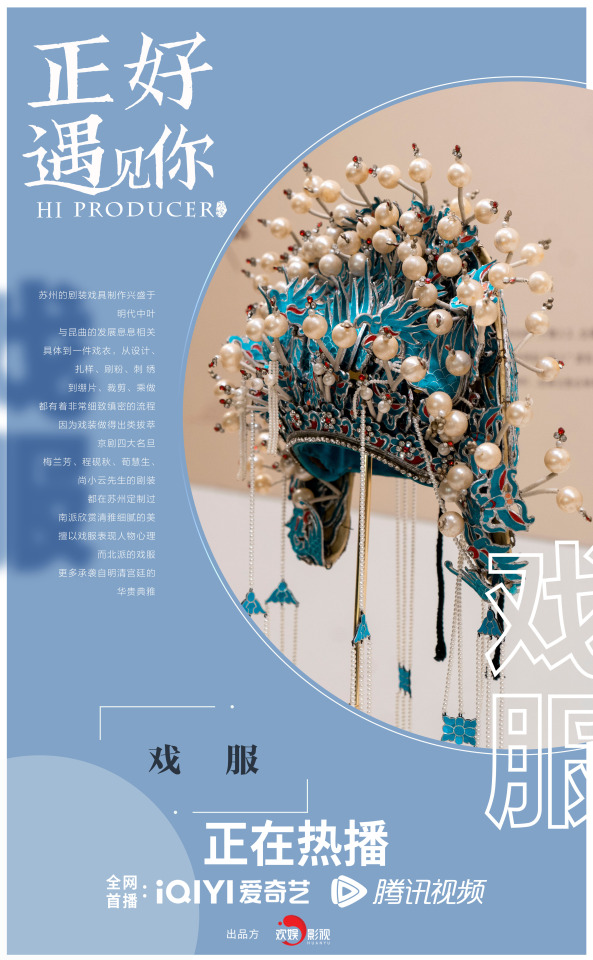


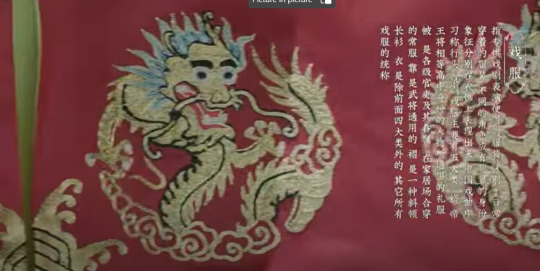
Stage outfits worn when performing Chinese traditional operas, since the Song and Yuan dynasties, a fixed pattern has been established gradually. Characters with different titles, social statuses, and personalities dress up differently so the audience can tell the disparities. Thus, there's a saying in the industry that a torn costume is better than the wrong costume. Following the rapid development of Chinese traditional operas during the Ming dynasty, the quality of headgear, costumes, and boots were improved considerably. Their design focused more on elegance and luxury.
Production of Suzhou stage costumes and props took off during the middle of the Ming dynasty. They're closely related to the development of Kunqu opera.
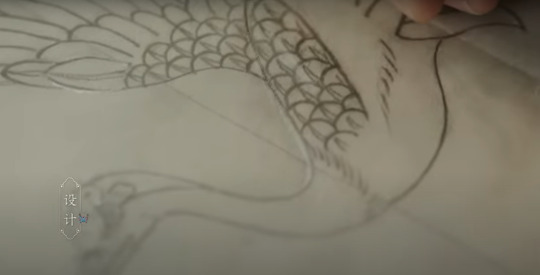
Designs, also known as outlines- In response to the different characters, various costume designs will be made. Dragons and phoenixes, flowers, Ruyi pattern, flowing pattern, and so on are commonly seen in such costumes.

Stitching, a process to create holes on the paper sample according to the design, to ease the foundation process.
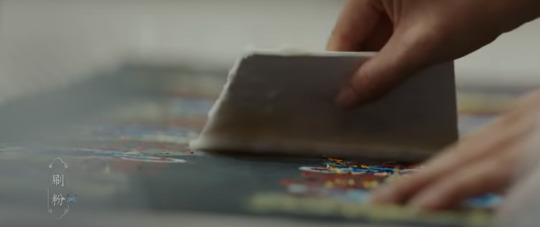
Foundation process, a process where the foundation is applied on the fabric that they're going to embroider on through the holes.

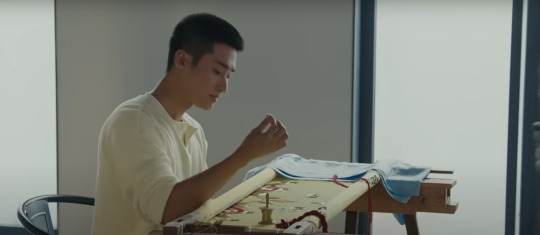
Embroidering, a sewing process that uses threads of different colors. For stage costumes, the dazzling gold and silver threads are commonly used.

Flattening, a process where you apply glue evenly onto the fabric with a glue knife to flatten the embroidered patches evenly.
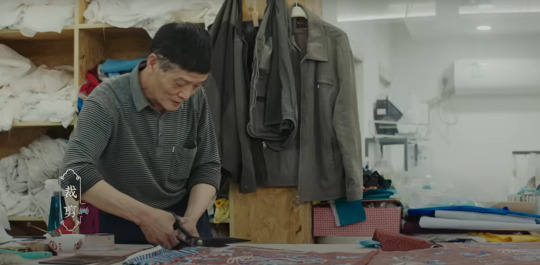
Cutting, a process where you cut the entire fabric and embroidered patches into desired sizes.
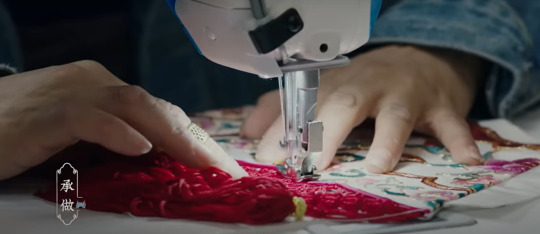
Completing, a process where you employ all kinds of sewing and gluing techniques to complete the costume.
Currently, all the stage costumes and props include headgear, boots, weapons, accessories, and headwear. These six main types cover over 1,000 kinds.
It's a shame that most of the crafts have gone extinct but as much as possible textual research of stage costumes is done, such as visiting museums in many cities to observe the preserved stage costumes in hopes of replicating something up to the standards of which of the Qing dynasty. That's a difficult task as the exquisite and luxurious stage costumes back then were produced by imperial craftsmen.


This episode truly felt like the epitome ofYu Zheng going Nudge, nudge, aren't I the most awesome costume drama producer? especially with the characters saying stuff like this lol🤭
Right now, there are stage prop and costume factories that take custom orders from film production crews. Celebrities may visit for personal requirements and many others out of admiration. To preserve texture and quality, outfits are made by hand for most parts. They have warehouses for costume design manuscripts. Best attempts are made to replicate the stage costumes of the past within reason such copper jewelry plated with silver as it costs too much if made with silver entirely. And handicrafts like velvet flowers take up a long time and has high labor costs. So most costume drama crews prefer a cheaper option like beaded flowers.
When an actor appears on the stage with these outfits on, the audience will know the title and the personality at first glance. It's completely different from some modern TV series. They don't dress in accordance with dynasties or characters. A random and wrong costume may look fashionable, but it won't fit the character and the plot itself. And overdoing the designs brings underwhelming results as when you are performing wearing them, overtly vibrant and exquisite designs will steal the spotlight from you. It's not the glorious look that decides its value. Anyway, we don't understand them.
I liked the following part a lot tho, it felt quite reasonable and moving. Especially as someone with 2x as my NORMAL watching speed, I know I still care for the meta details and the reason I watch fast is not because I don't care for the effort and research that went into a production.
Next year, online video platforms will launch a 4X speed function for all TV dramas. One might think that no one will be interested in Chinese operas is they've never spent time in a traditional Chinese theater before. There are rarely fans of Chinese opera nowadays.
It takes tens of procedures to making a stage costume. We need to focus on every single detail and can't rush things. But people are always in a rush. Making props and costumes by hand isn't efficient, and there's little demand. Many people wonder if the younger generation is willing to pick up this craft? What if such an excellent craft does go extinct? People always say that productions like this are slow and can't adapt to the era of machine production.
Many adapted historical tales are quite interesting not just because it touches on people's sentimentality. If their sentimentality can be used advantageously, that means people are still reminiscing about the past. However, this method will come to an end one day as a show is just a show. It has no way to save all those crafts that are going to vanish soon. Even if all these crafts will disappear after a century, we still hope that people will know that we once spent half a day just to make a fold or spent one and a half years just so we could produce one piece of stage costume.
What do we call this? We call this a craft. We call this a legacy.
China is a country with a big population. As long as there's one person who likes traditional crafts and is willing to learn, the legacy won't disappear.
.
Rose-purple satin female Kao costume

Embroidered with phoenix and peony patterns in flat gold that was made during the Guangxu period of the Qing dynasty. Every detail has been carefully recorded so the future generation could refer to it. The Chinese opera industry is developing. There are many newly adapted versions of historical operas. When designing costumes, aesthetic standards of the younger audience and the requirements of various kinds of stages both are taken into consideration.
.
Cixi watching the opera
-Showcasing the contrast of costumes and performances of Southern and Northern operas
youtube
.
Beijing silk figurines

To make these, one must know sculpting, painting, and design of outfits. Similar to stage costumes and props, it's a fusion of many traditional crafts. But not many are aware of this. Most in the field do this as a hobby because in China, people aren't aware that these are not the work of craftsmen, but artists.
It got the name because the whole figurine is made with premium silk cloth and silk gauze. Beijing silk figurines were invented back in the Tang dynasty in Northern Fujian, when people used paper to make animal dolls. The craft continued to develop until the Song dynasty. People started using silk to make human figurines.
.
More Misc. Crafts
Featured in the timestamped vid below such as:
Sandpainting, Suzhou Embroidery, Hokkien Lacquer Thread Sculptures
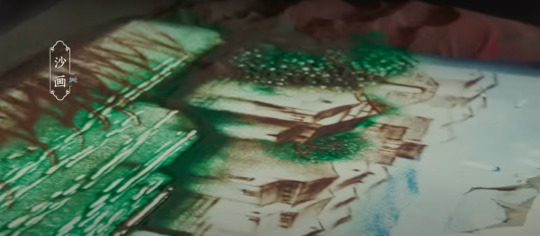
Many consider that sand animation originated in Hungary. Although Ferenc Cako did turn sand animation into a modern performance, traditional sand animation originated in China. During the Song Dynasty, there were stories of people writing on sand and so on.
Suzhou embroidery is one of the Four Great Embroideries of China along with Hunan's Xiang embroidery, Guangdong's Yue embroidery, and Sichuan's Shu embroidery. The Suzhou embroidery is detailed and subtle. In May 2006, it was listed as a national intangible cultural heritage.
Lacquer thread sculpture originated in Quanzhou of Fujian. It has existed for over 1400 years. The craftsmen must use the fine thread of lacquer and specialized techniques to create these resplendent patterns. Every piece is one of a kind.
youtube
.
Making Liuli Glass
The ancient process of making colored glaze was very complex. The colored glaze was born in the fire and drowned in water. It takes dozens of processes to complete such as: detailing the wax pattern, casting the plaster mold, coloring, firing in the kiln.
Normally, steps involved in the making of colored glazed are designing, making of silica gel mold, making and detailing of wax patterns, the making of plaster molds, and being fired in a kiln, removing the plaster mold, sanding, and polishing.
youtube
Timestamped Documentary segments:
Props and Costumes Craft
youtube
Of Traditional Opera Theatre
youtube
.
More Hi Producer posts
#cdrama#chinese drama#正好遇见你#Hi Producer#fashion history#chinese history#chinese jewellery#Youtube#chinese opera#costumes and props#chinese opera costumes#liuli glass#beijing silk figurines#sandpainting#suzhou embroidery#Hokkien Lacquer Thread
14 notes
·
View notes
Text
I don’t have time for both, I have my grocery store job :( I wanted to try Poliński shorthand system, I heard it’s the best for writing in polish, but also I haven’t embroidered in a few months now and I fell a new motivation for it coming…
Xoxo
2 notes
·
View notes
Text
Suzhou Embroidery: The Modern Charm of a Traditional Art
Suzhou embroidery, originating from the Suzhou area in Jiangsu Province, China, boasts a history of over two thousand years. Renowned for its exquisite needlework and rich colors, it is hailed as the "Pearl of Eastern Art." The themes of Suzhou embroidery are vast, ranging from flora and fauna to human stories, all vividly brought to life, showcasing the incredible skill of the embroiderers.
Suzhou embroidery is not only an art form but also a cultural heritage. In this rapidly changing era, we should cherish and pass on these ancient crafts. The next time you admire a piece of Suzhou embroidery, take a moment to savor the history and culture within, and feel the unique charm that comes from an ancient tradition.
0 notes
Text

I have obtained silk threads!!!!! Time to try Suzhou embroidery!!!
#I am ancestrally sourced from suzhou#I mean I guess I just want to embroider something double sided lol#but make it Chinese y’know?#embroidery#personal#the store I buy cotton floss from was having a bundle sale
13 notes
·
View notes
Text
wait are there gonna be like... three birthday livestreams
#theyre all talking about different collabs#suzhou embroidery suzhou lanterns and ice sculptures#sleepy.txt
1 note
·
View note
Text
😲 Su Embroidery Double-sided Show, a treasure of Chinese embroidery art originating from Suzhou, Jiangsu, stands out in the traditional art world with its unique double-sided embroidery technique. It skillfully displays the same or different patterns on both sides of the same piece of fabric...
89 notes
·
View notes
Photo




suxiu/suzhou embroidery by artist yao jianping姚建萍
877 notes
·
View notes
Text

Zhou Zhou — World After Humanity I (ink, chinese pigments, linen, rainbow yarn, suzhou embroidery thread, machine embroidery thread, silk, pin; hand embroidery, 2023)
57 notes
·
View notes
Text
Me, a gremlin, waking up at 3:30 am: how about instead of going back to sleep i unpick all the messy embroidery I did yesterday and try again? In my poorly lit room? When I have to get up for work in 3 hours? What if I split this already finicky embroidery thread into its individual plies because apparently that’s how a lot of Suzhou embroidery achieves that ultra-shiny flat surface?
Anyway my test worked and I can now return to the sweet embrace of sleep
30 notes
·
View notes
Text





Lin Yun for the fifth issue of the 2023 Fashion Bazaar aesthetic theme project "The Twelve Beauties of China: Suzhou Embroidery"
See full spread HERE
15 notes
·
View notes
Note
Hi! Sorry to bother you, I noticed you opened your ask box but the pinned comment still says asks closed so I apologize if its still closed + feel free to ignore this 😅 I was just wondering if you had any resources on a more regional history of clothing? English and Chinese are both okay, I've seen quite a bit regarding class, gender, etc. but I was wondering about style/fabric/design variation by region, influenced by climate, contact/living closely with other nearby cultures, etc.
Hi. Oh yeah ask is closed because I won't bother to research for my ask.
Short answer: No I don't.
People had mentioned that there are regional differences in Ming dynasty clothing, particular the royals in Beijing vs Jiangnan (Suzhou, Hangzhou area - close to Shanghai except Shanghai didn't exist at that time), as in the royals dressed in a more "plainer" style with shorter sleeves and length compared to the Jiangnan area, which was the economy centre. And in Song dynasty, Han clothing in the north (non-Song-dynasty area) was influenced by other cultures, and are wilder and not in a H-shape silhouette. Some bloggers on weibo could also tell regions and periods of Qing dynasty clothing based on their style and embroidery, but I have no idea if there is a book on it. Most books on historical clothing, at least for those talking about pre-Qing clothing (I don't know about Qing dynasty, since there are much more artifacts around but I don't care about Qing fashion), only discussed things by time.
#ask#fouryearsofshades#hanfu#historical clothing#chinese history#feel free to add if you have resources
21 notes
·
View notes



